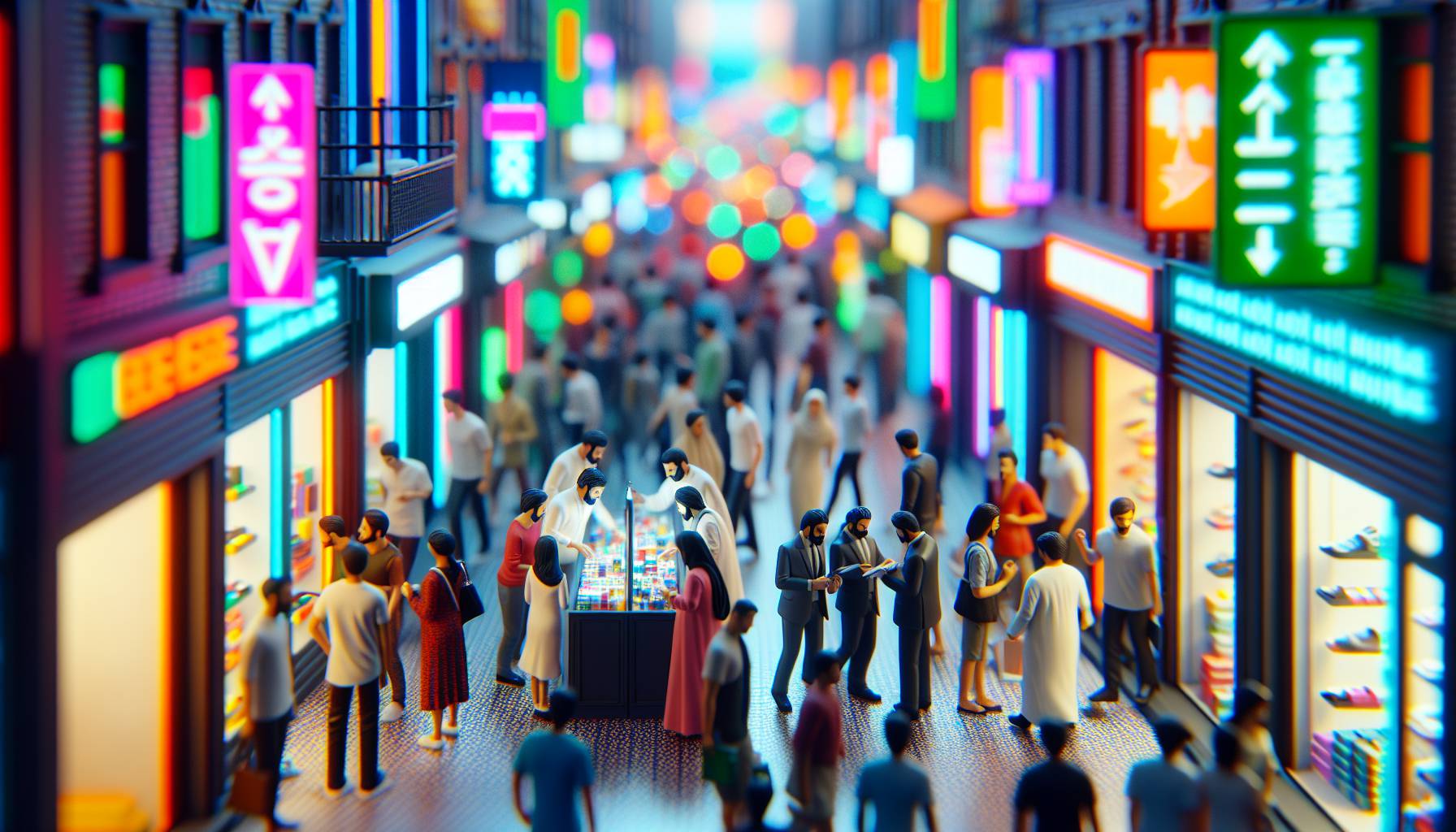The Importance of Trust in Retail

What’s stopping people from buying something in your shop. Often, it comes down to trust. I think about this a lot, as a seller myself.
If you can’t build that sense of security, you’re missing out on a whole bunch of sales. More or less. For many customers, there’s a sense that they’re going to get tricked or scammed online.
I suppose that’s why so many try and shop from people they already know, or at least have heard of. It seems like quite a fair concern to have. The best thing you can do to ease their worries is to help them trust you more.
There are little things you can do to make people feel more comfortable shopping with you - and no, it doesn’t take any fancy design tricks or expensive paid services. Just focus on the basic factors of trust and you’ll see how quickly things change for the better. That could look like displaying what payment methods your shop accepts clearly at checkout, making sure your product photos and descriptions are clear (and honest), or providing a clear method of contact for customer support. What all of these elements have in common is clarity and transparency - two fundamental factors in trust building for retail experiences (especially online).
Providing support also goes a long way in showing people that you care about their experience with your brand, which always adds bonus points to customer loyalty - especially after the transaction has been completed. At the end of the day (pun intended), helping people feel safe shopping with you and encouraging them to come back is the key to business success across the board.
Visual Merchandising: Creating a Welcoming Atmosphere

Do you ever find yourself drawn in by a display or window set-up. As it turns out, people are easily influenced by a visually appealing display. It is one of the best ways to get customers to approach your store and create a welcoming atmosphere. Visual merchandising involves clever use of props, mannequins, hangers, racks and other materials for displaying product in an inviting way.
It's sort of like creating a story that draws customers in and gives them a glimpse into what their lives could look like with those products. Many fashion designers and retailers believe that visual merchandising is one of the most important marketing strategies you could have. But it isn't just about making your windows look pretty, as attractive displays encourage impulse buying, which helps boost sales. The use of complementary backgrounds, clean light fixtures and well-maintained store fronts also serve to reaffirm customer trust in a brand or business.
While there are some general ideas and formulae to follow when it comes to displaying products at your store front or in your window, every retailer should find their own style. There isn't any hard and fast rule here because this is also about your creativity with what you can do with your resources. If you're worried about storing things away at night then pick practical props.
And don't be afraid to experiment.
Clear Communication: Signage and Information

How do you know you're in the right place if the shop name is a cryptic, squiggly logo. That’s all right for big, iconic stores but for most, clear signs are better than cool ones. Feels Like why leave it to chance that people will spot your little boutique.
If people can’t see your sign or read it, you’re closing yourself off to so many more customers. The way I see it, i do think visibility is a crucial way to communicate with customers. It tells them who you are and what you’re about before they even walk in the door.
Consistency is key here as well. If your store logo and colours are different from what you use online, people may think they’re at the wrong place.
This can be really stressful and make people question your credibility a bit. And if you have multiple branches, using similar signage across all locations builds customer trust because they already know what to expect. Sometimes shop owners get a little too creative with their sign placements.
This is great if you want to go viral on social media but it’s not always good for customers who need information immediately. More or less. Keep store hours and other vital information at eye level.
I don’t mean you should keep all the details out in front (that would look odd) but show as much information as possible so customers don’t get confused about your policies. Clear communication is important online and offline because people’s attention spans are short these days - myself included. They want answers instantly so being upfront with information is essential to building trust and showing them that your brand is reliable, consistent and trustworthy.
Customer Testimonials: Leveraging Social Proof

Why do we trust strangers more than brands - especially if those strangers look a bit like us, seem honest, and have bought something we want. I suppose people just like to feel seen - and if a bunch of other people who look like us say that the brand is good, it makes sense to trust it. And a bunch of testimonials show that lots of people have bought from the brand, so you’re not likely to be swindled or tricked by the store.
Testimonials are similar to reviews, except they’re not hosted on third-party sites. Because they can be selected by stores themselves (to be displayed on their websites), testimonials tend to be a tad more positive in general - often with photos or videos for added appeal and authenticity. These reviews usually reference some aspect of the buying experience that was particularly positive - and can pretty much help set expectations for your own customer experience.
Usually, you’d find testimonials peppered through product pages or featured prominently on homepages - often with links to check out full reviews or their socials. Brands usually display a handful of selected testimonials from happy customers but do include critical ones as well if there are usually any. Social proof works best when it’s authentic. And featuring only glowing reviews with nothing negative may come off as inauthentic - almost curated instead of honest.
It seems like this is where adding testimonials from third-party review platforms helps: it shows that you’re transparent about feedback from customers and are open to criticism. I think all brands should have some form of social proof up on their store fronts because it shows honesty and willingness to engage with customers - along with demonstrating your commitment to offering a great experience.
Security Features: Ensuring Safe Transactions

Are you even a real business if you don’t have a McAfee badge, 3D Secure, and SSL security. No one should have to buy from an insecure website. Security certificates, encrypted payment portals, secure sign-ups - these are all signs that a customer’s data is safe in your hands. It’s one thing to say your store is secure.
Sort of. But that really needs to show up as words, logos, seals of authenticity and certification on your site. Trust is what people are looking for when they’re shopping online - whether it’s from someone who’s been around for years or someone with almost no history but lots of potential. Security features like certifications might not seem like the most direct way to get someone’s attention or keep them around long enough to buy something but it’s better safe than sorry.
Online safety continues to grow into more important territory every single year and everyone wants a little more of it. People understand that their information has never been more valuable and so they need more assurance than ever. Security badges and certificates can be added at checkout pages, as part of order confirmation emails, and sprinkled in other high-visibility areas like product pages where payment might be requested directly or indirectly.
Remember though, not all badges come from providers with the same amount of authority so make sure you’re using the big ones (but not Google Trusted Stores because they don’t exist anymore).
Staff Engagement: Building Personal Connections

Have you ever walked into a shop and had the staff greet you like they’re glad to see you. It’s surprisingly memorable. I don’t mean overbearing, either.
More that slightly warm hello, where someone looks up from what they’re doing, makes eye contact and acknowledges you. That connection is just so important - you can feel it. Staff engagement should never be pushy or forced, but genuine curiosity about a customer - perhaps even a compliment or two about what they’re wearing, or a comment about something they might have in their hand - makes everyone feel connected.
It seems like and feeling connected is part of the trust building process. It can be as simple as ‘how was your day. ’ That question always creates space for conversation - and people love to talk. Good retail staff know how to read a customer - some want to browse on their own and simply being available at the counter with an awareness of their presence is enough.
Others come into a shop because they are looking for something special, and having someone who can direct them to those items feels like luxury service. I think shoppers like feeling special, that this experience is different from other shopping experiences in other stores. The way I see it, having staff who are engaged but not smothering is important for making customers feel safe and welcome.
When people walk into your shopfront they want to know immediately that it’s easy to get help and talk about products if needed. Even more than that, having a friendly person there makes customers far more likely to buy things.


